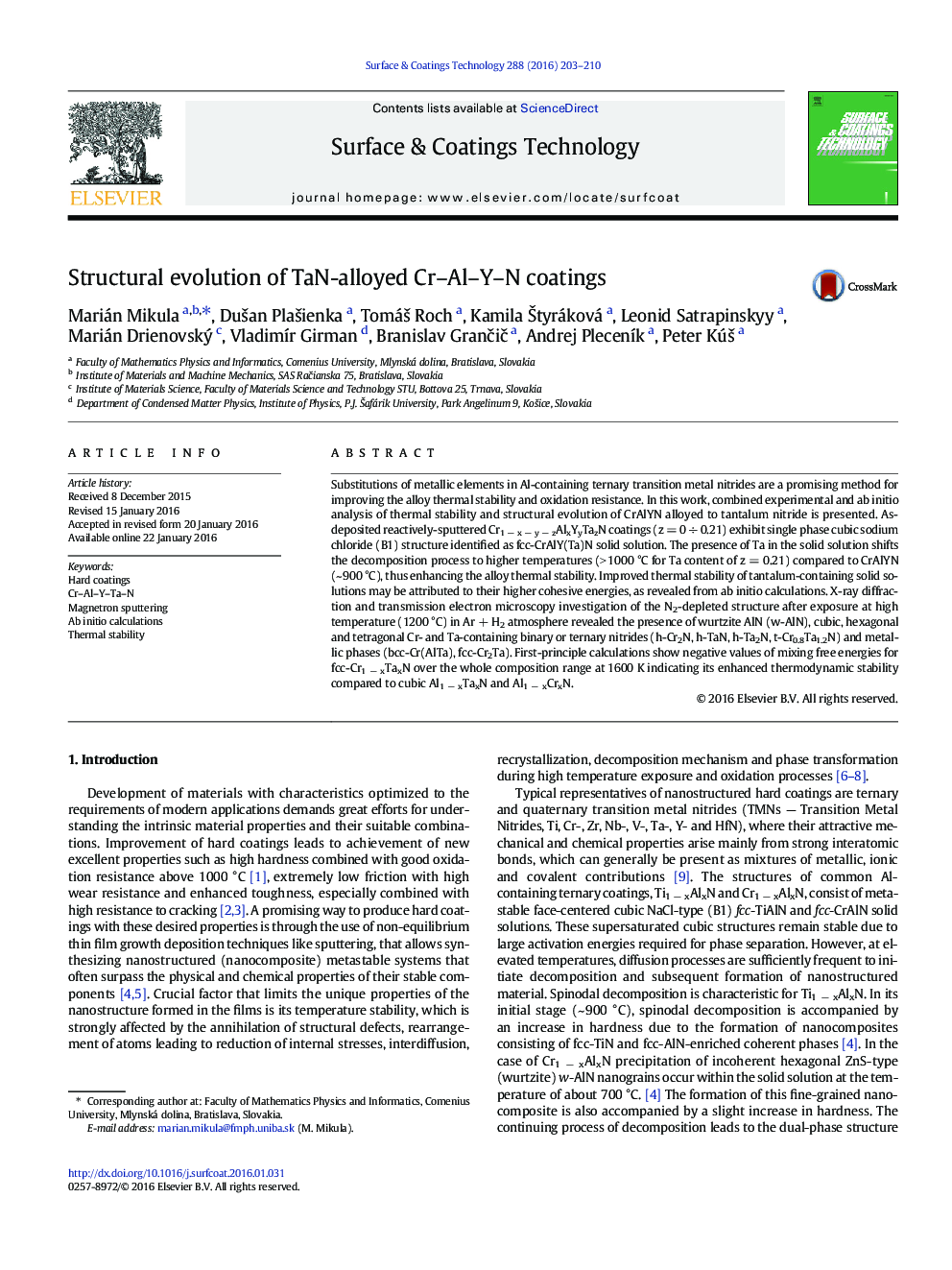| Article ID | Journal | Published Year | Pages | File Type |
|---|---|---|---|---|
| 1656721 | Surface and Coatings Technology | 2016 | 8 Pages |
Abstract
Substitutions of metallic elements in Al-containing ternary transition metal nitrides are a promising method for improving the alloy thermal stability and oxidation resistance. In this work, combined experimental and ab initio analysis of thermal stability and structural evolution of CrAlYN alloyed to tantalum nitride is presented. As-deposited reactively-sputtered Cr1 â x â y â zAlxYyTazN coatings (z = 0 ÷ 0.21) exhibit single phase cubic sodium chloride (B1) structure identified as fcc-CrAlY(Ta)N solid solution. The presence of Ta in the solid solution shifts the decomposition process to higher temperatures (> 1000 °C for Ta content of z = 0.21) compared to CrAlYN (~ 900 °C), thus enhancing the alloy thermal stability. Improved thermal stability of tantalum-containing solid solutions may be attributed to their higher cohesive energies, as revealed from ab initio calculations. X-ray diffraction and transmission electron microscopy investigation of the N2-depleted structure after exposure at high temperature (1200 °C) in Ar + H2 atmosphere revealed the presence of wurtzite AlN (w-AlN), cubic, hexagonal and tetragonal Cr- and Ta-containing binary or ternary nitrides (h-Cr2N, h-TaN, h-Ta2N, t-Cr0.8Ta1.2N) and metallic phases (bcc-Cr(AlTa), fcc-Cr2Ta). First-principle calculations show negative values of mixing free energies for fcc-Cr1 â xTaxN over the whole composition range at 1600 K indicating its enhanced thermodynamic stability compared to cubic Al1 â xTaxN and Al1 â xCrxN.
Related Topics
Physical Sciences and Engineering
Materials Science
Nanotechnology
Authors
Marián Mikula, DuÅ¡an PlaÅ¡ienka, TomáÅ¡ Roch, Kamila Å tyráková, Leonid Satrapinskyy, Marián Drienovský, VladimÃr Girman, Branislav GranÄiÄ, Andrej PlecenÃk, Peter KúÅ¡,
